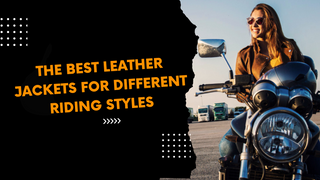12 Tips to Keep Motorbike Riders Safe
Posted by Jack on 9th Oct 2015
Bike riders are at greater risk riding a bike than motorists driving a car. However, there are things that can be done to minimise the risk. NRMA’s Senior Policy Advisor and bike rider Jack Haley gives his advice.
1. Maintain your bike properly – worn tyres and brakes, for instance, can make the bike behave unpredictably. Regular maintenance can also prevent you being stranded a long way from home. If you are not confident of doing it yourself, get a qualified bike mechanic to do it.
2. Get to know your bike. If you have ABS, try it out on a private or quiet road with no-one behind you so you know what to expect, rather than find out about it in an emergency. If you have switchable traction control, leave it on unless you are confident you can handle the rear tyre breaking loose under power.
3. Wear good quality clothing. While there is not yet a star rating system for clothing (there is an Australian group working on it), check to see if at least the body armour in clothing is CE rated. Some clothing claims compliance with the CE material abrasion tests as well, so you may wish to consider purchasing this gear. Riding to work is generally lower speed but the abrasiveness of the road surface and the rigidity of roadside objects is the same everywhere, so wear protective gear to ride to work and change when you get there. On longer rides, good gear prevents you getting too hot or cold, which affects your awareness and riding skills.
4. Choose clothing with some reflective panels or piping and preferably with coloured inserts to break up the overall black material. A matt black helmet with black clothing on a matt black bike is hard for anyone to see at night. Reflective tape stuck to clothing and/or the bike can also be useful at night. Some may want to go the whole hog and wear a reflective vest. If the bike’s headlight aim is adjustable, check that it is correct – if too low, it will affect your visibility; if too high it will annoy other road users and is illegal.
5. When riding, scan as far ahead as you can, preferably at least 5 seconds, so you have advanced warning of threats – darker patches on the road might be an oil spill, an object on the road might look like a paper bag but could be a rock, and lots of brake lights ahead might indicate the traffic is stopping quickly. If you can’t see 5 seconds ahead, slow down until you can – you must be able to stop in the distance you can see to be clear. Visit Ride to Live for a few video demonstrations of recognising risk.
6. Look where you want to go, not where you don’t – you tend to go where you’re looking. If you want to enjoy the scenery, stop and take a proper look.
7. Give anything that might be a hazard some clearance – road workers, a car with a door open, a dog on the side of the road.
8. When cornering, aim to keep towards the centre of the lane – this will keep you away from on-coming traffic on right hand corners and broken edges and potholes on left hand corners. Start wide until you can see the apex of the corner, then finish relatively tight, without using the very edge/centre of the lane.
9. Unless moving up to overtake, stay at least 3 seconds back from a vehicle in front – not only does this give you more room to brake if necessary, it gives you a better view of what is happening ahead of the preceding vehicle, providing you with information earlier, giving you more time to react if you need to. On wet or gravel roads, or rough surfaces, increase the gap.
10. Beware of complacency if you ride the same route every day – many things will be the same but the unexpected can always occur.
11. Attend training courses regularly – no one knows or remembers everything.
12. Get covered with roadside assistance for your motorbike.
|
|
About Jack @ NRMAJack is the NRMA’s advocate and champion for vehicle technical and environmental issues. He has been with NRMA for 24 years and previous to that worked for a vehicle manufacturer and ran an emissions laboratory. He analyses new technologies, suggests any testing required and manages the NRMA’s involvement in national programs such as ANCAP, the high speed crash test program that provides safety ratings for purchasers of new vehicles; the Used Car Safety Ratings, that provide similar ratings for used cars; the Child Restraint Evaluation Program, to rate child restraints; and the Consumer Rating and Assessment of Safety Helmets (CRASH) to rate motorcycle helmets. Jack also presents NRMA policy and test results from these programs in the media, so you may see him on TV or hear him on the radio. |






